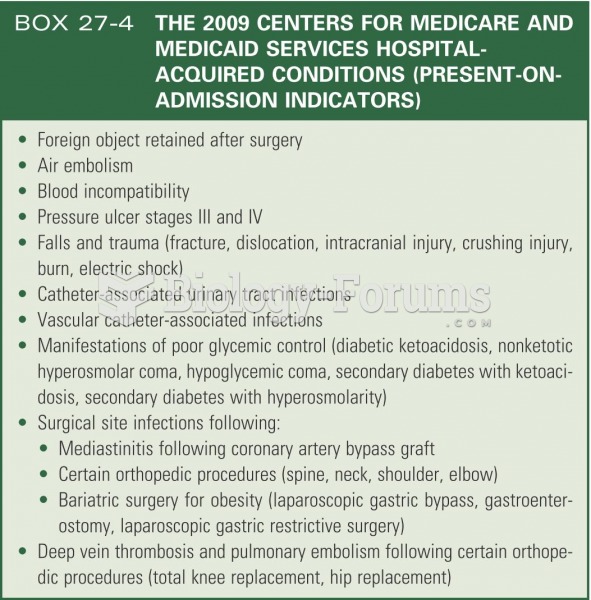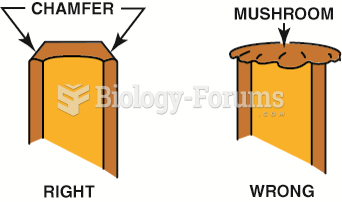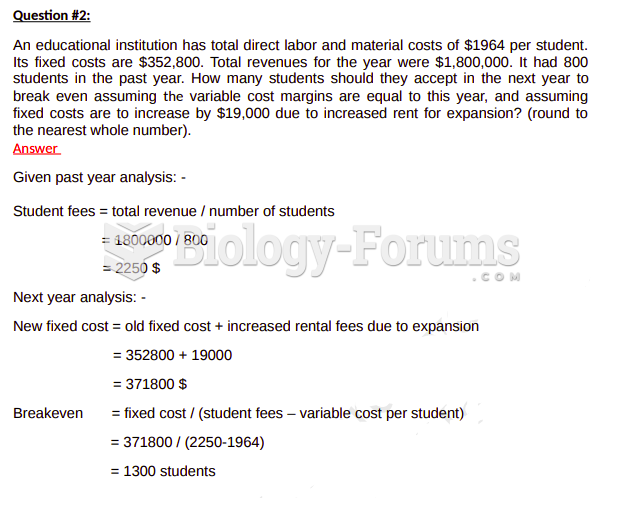|
|
|
Your chance of developing a kidney stone is 1 in 10. In recent years, approximately 3.7 million people in the United States were diagnosed with a kidney disease.
All patients with hyperparathyroidism will develop osteoporosis. The parathyroid glands maintain blood calcium within the normal range. All patients with this disease will continue to lose calcium from their bones every day, and there is no way to prevent the development of osteoporosis as a result.
Earwax has antimicrobial properties that reduce the viability of bacteria and fungus in the human ear.
If you could remove all of your skin, it would weigh up to 5 pounds.
According to the FDA, adverse drug events harmed or killed approximately 1,200,000 people in the United States in the year 2015.







